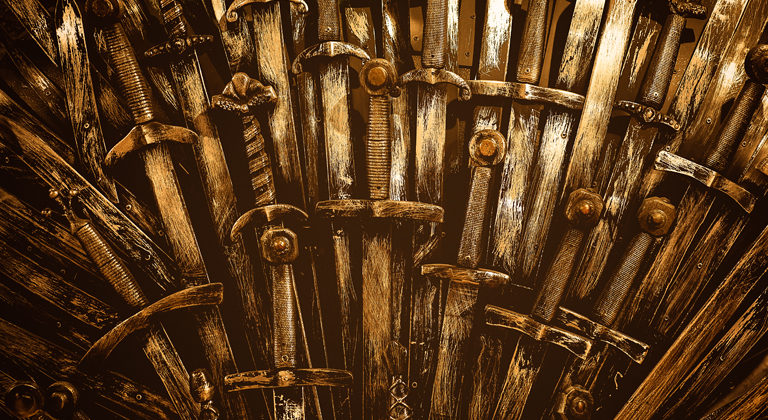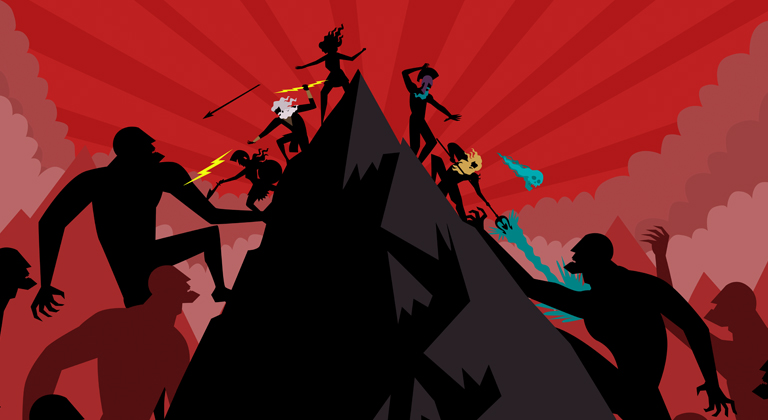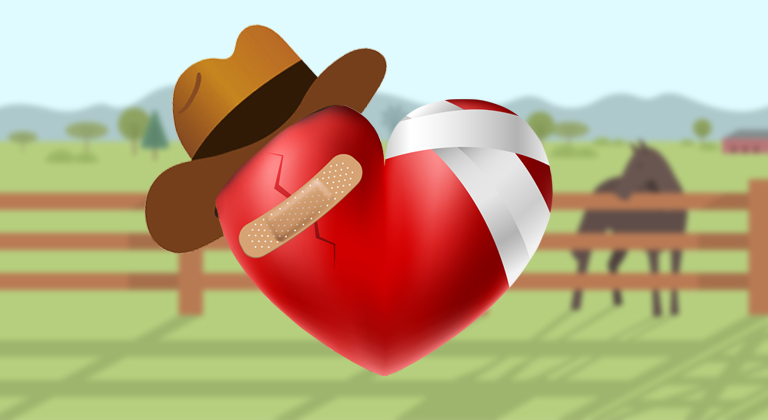What can GoT author George R.R. Martin teach us about Characterization?
One of the biggest challenges new authors face is juggling multiple characters – especially when the story jumps between the viewpoint of different people. This is especially important when writing a series, or a big epic novel, but can also apply to smaller books and stories as well.
One of the undisputed masters of juggling multiple character Points of View (POV) is George R.R. Martin – and in this blog post, Ginger will cover some of the things we can learn about characterization from studying his work.
In addition to writing and self-publishing my own books, I’ve worked with a lot of authors and helped develop and edit their books. One of the issues I consistently find new authors struggle with is keeping a coherent point of view throughout their books – especially when they write them in third-person perspective, and jump from character to character.
If done poorly, jumping from the perspective of one character to another makes a story extremely difficult to follow. If done well, it can create a vividly engaging narrative in which the reader gets to enjoy the story with a contextual understanding that none of the individual characters they read about possesses independently. It’s a great way to see the big picture through individual snapshots of character-based storytelling.
But how do you manage to do that right? How can you avoid the most common mistakes authors fall victim to? How have other authors overcome this challenge?
Of all the authors who’ve managed to successfully juggle a large cast of characters, perhaps George R.R. Martin is the best known. His epic fantasy series A Song of Ice and Fire (brought to life on television as Game of Thrones) is renowned for its sprawling and intricate narrative, told through the perspective of a multitude of complex characters.
One of Martin’s strengths as an author is his ability to cohesively and clearly differentiate these characters – allowing readers to dive into a vast and visceral world filled with varied perspectives and diverse viewpoints.
I’ve spent some time exploring how George R.R. Martin accomplishes this in his writing, and I believe I’ve isolated some of the most important narrative techniques he uses to structure such rich and complex character development and storytelling. Hopefully, this information will be of use to writers challenged with juggling a large cast of their own characters!
Character Depth and Complexity
The central pillar of George R.R. Martin’s characterization technique is the depth and complexity he pours into each character. He recognizes that people, whether in fiction or reality, are multifaceted beings – each with their own motivations, histories, and moral compasses. By delving into the intricate layers of his characters, Martin helps them stand out, remain memorable, and help readers easily distinguish one from another. There’s no truly good or bad – just highly contrasting shades of grey.
Take, for instance, Tyrion Lannister – a character whose wit, intelligence, and acerbic humor make him instantly recognizable. Martin takes us deep into Tyrion’s psyche, revealing his vulnerabilities, his fierce intellect, and his constant struggle for acceptance in a world that looks down upon him due to his perceived deformities. This multi-dimensional portrayal ensures that Tyrion’s viewpoint is distinct from other characters, making it easy for readers to identify the focus of the chapters that feature him.
Unique Character Voices
Another technique Martin employs to differentiate characters is through their unique voices. Each point-of-view character has a distinctive narrative voice and style of thinking, allowing readers to instantly recognize from whose perspective they’re reading.
For example, Arya Stark’s chapters are marked by her youthful innocence and fiery determination, while Cersei Lannister’s chapters are laced with ambition, cunning, and paranoia. Jon Snow’s chapters are filled with introspection, a sense of duty, and the weight of his responsibilities, setting them apart from the chapters of other characters. Through these distinct narrative voices, Martin ensures that the reader is never lost within the myriad viewpoints presented throughout the series.
Physical Descriptions and Idiosyncrasies
Physical descriptions and idiosyncrasies play a crucial role in character differentiation. Martin is meticulous and consistent in his portrayal of characters, providing vivid details about their appearances, clothing, and distinctive traits. For example, Daenerys Targaryen’s silver hair and violet eyes are iconic, as is Jaime Lannister’s golden hair and his reputation as the “Kingslayer.”
Martin uses characters’ idiosyncrasies and unique skills, such as Bran Stark’s fascination with climbing or Samwell Tarly’s love of books, to give them unique perspectives and narrative opportunities. These important points-of-view anchor readers in the story and help provide the reader with key insight and knowledge that couldn’t be shared through the narratives of other characters.
Varied Backgrounds and Perspectives
Worldbuilding in fantasy and science fiction is incredibly important. In the Game of Thrones series, George R.R. Martin has built a sprawling world with numerous regions, cultures, and belief systems. Martin leverages this rich tapestry to differentiate characters through their backgrounds and perspectives. By crafting characters from different regions, Martin ensures that their viewpoints are informed by their unique cultural and social contexts.
For instance, the Stark children’s upbringing in the North instills in them a sense of honor, duty, and closeness to nature, which sets their perspectives apart from characters like the scheming, politically savvy characters of King’s Landing. The clash of these diverse backgrounds and perspectives forms the core of the series’ intricate web of intrigue.
Moral Compass and Choices
As I mentioned above, there’s no real “good” or “bad” in Game of Thrones – just varying shades of grey (although characters like Ramsay Bolton are a really, really dark shade of grey!)
George R.R. Martin uses the flawed moral compasses and questionable choices of each character as an additional way to differentiate them in the narrative. For example, Eddard Stark’s unwavering commitment to honor and integrity distinguishes him from characters like Petyr Baelish, who thrives on deception and manipulation. Similarly, the choices characters make in critical moments reveal their true nature and motivations. This moral ambiguity not only helps readers distinguish different characters, but also adds layers of complexity to the saga.
Dynamic Character Development
One of the most compelling aspects of character differentiation in Martin’s work is the dynamic character development that occurs throughout the series. Characters evolve and change in response to the challenges and trials they face. This growth is not only evident in their actions but also in their inner thoughts and viewpoints.
For example, Jaime Lannister begins the series as the arrogant and despised “Kingslayer” – but soon undergoes a profound transformation as he grapples with the consequences of his actions. Readers witness this change through Jaime’s shifting perspective, making him one of the most compelling and well-differentiated characters in the series.
Interactions and Relationships
Martin uses character interactions and relationships as another means of making it easy to follow individual points-of-view. How characters relate to and perceive one another in the world of Game of Thrones provides valuable insights into their personalities and worldviews. These interactions create a dynamic web of relationships that add depth and complexity to the story.
A good example is the complex relationship between Jon Snow and Sansa Stark, two characters who grow up together but have vastly different experiences and viewpoints. Their interactions and perspectives on their shared past highlight their individual growth and the struggles they’ve endured.
Symbolism and Foil Characters
Symbolism and “foil characters” are additional tools George R.R. Martin employs to differentiate his characters in the narrative.
He often uses symbolism to convey deeper themes and insights into a character’s personality or fate. For example, the direwolves that the Stark children adopt in the series symbolize their individual destinies and personalities.
“Foil characters,” on the other hand, are designed to contrast with one another, highlighting the differences and similarities between two characters. For example, Jon Snow and Samwell Tarly serve as foils to one another, emphasizing their distinct paths and outlooks on life and branching the story off as they each go their separate ways.
Conclusion
George R.R. Martin’s ability to cohesively and clearly differentiate between the perspectives of all the myriad characters in Game of Thrones is a real testament to his skills as a storyteller. Martin creates a world rich in diversity and complexity – and as readers navigate the intricate web of perspectives they experience, they’re drawn deeper into the captivating realm of Westeros and Essos.
It’s sagas like Game of Thrones that really demonstrate how multiple characters’ distinct viewpoints can enrich the storytelling experience. It’s not an easy task to accomplish – but Martin’s masterful handling of character differentiation has now been recognized as one of the defining strengths of his epic fantasy series, and one of the reasons why A Song of Ice and Fire will continue to be celebrated by readers for generations to come.











